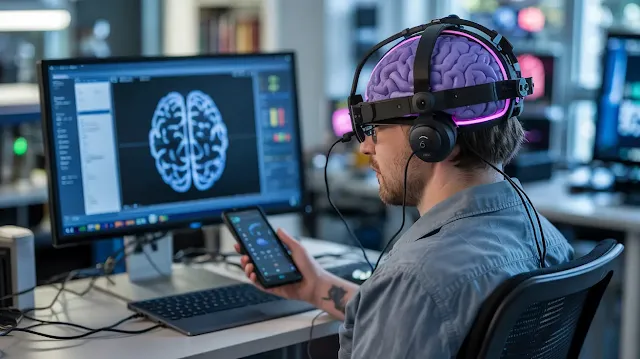Brain-Computer Interfaces: How BCIs Are Transforming the Future of Technology
Brain-Computer Interfaces (BCIs) and the Future of Communication
Have you ever imagined a world where you can control technology with nothing but your thoughts? Brain-Computer Interfaces (BCIs) are making this possibility a reality. These interfaces establish a direct communication channel between the human brain and computers, allowing users to interact with devices without the need for physical movement or verbal commands. What once seemed like science fiction is quickly becoming a transformative reality, reshaping the way we interact with technology.
The Human Brain: A Complex Network of Signals and Communication
Before diving into BCIs, let's take a moment to appreciate the complexity of the human brain. It is not just the control center of our body; it is also the source of our thoughts, decisions, emotions, and even dreams. The brain communicates via electrical signals that travel through intricate neural pathways, almost like an internal network. The challenge lies in understanding and interpreting these signals so that machines can understand them. This is where BCIs come in technology that can translate brain signals into commands that computers can execute.
How Brain-Computer Interfaces Work: Translating Thought into Action
BCIs enable direct communication between the brain and external devices by reading the brain’s electrical activity. Researchers have developed sophisticated implants that can intercept these neural signals and convert them into commands that a computer, or robotic device can follow. For example, a person with limited mobility could use BCI technology to control a wheelchair, or a prosthetic limb simply by thinking about it. BCIs can even allow users to control smart devices in their home with just a thought.
Potential Applications of BCIs: Empowering People with Disabilities
One of the most impactful applications of BCIs is in assisting individuals with disabilities. For people with paralysis or motor impairments, BCIs provide a means of regaining autonomy. No longer would they need to rely on others for tasks like operating a wheelchair, turning on a light, or interacting with their environment. Additionally, BCIs could offer a revolutionary way for people with speech difficulties to communicate more effectively by translating their thoughts into speech or text directly.
Challenges in Decoding Brain Signals: Overcoming Technological Hurdles
While the potential of BCIs is exciting, there are significant challenges in understanding and interpreting brain signals. The human brain’s neural activity is highly complex and varies from person to person, which makes it difficult to develop universal algorithms capable of decoding these signals accurately. This requires advanced machine learning techniques and vast amounts of data for training the algorithms.
Furthermore, the development of BCI devices requires careful attention to safety and reliability. Implanted devices must be designed to avoid long-term health risks, such as infections or tissue damage, and must be robust enough for daily use.
Ethical and Privacy Concerns: Safety and Acceptance of Brain-Computer Interfaces
As with any breakthrough technology, the use of BCIs raises important ethical and privacy concerns. The idea of implanting devices in the brain may be unsettling for some, and ensuring these devices are both safe and effective is essential for widespread acceptance. There are also potential privacy issues to consider, as the direct link between a person’s thoughts, and a machine raises questions about data security and mental privacy.
The Future of Brain-Computer Interfaces: Unlocking Limitless Possibilities
The future of BCIs is full of exciting possibilities. Imagine being able to accelerate learning by directly accessing information from a database, or controlling your entire smart home with a single thought. BCIs could even open doors to enhancing cognitive abilities, such as improving memory, or combating neurodegenerative conditions like Alzheimer’s disease.
In the long term, BCIs may even lead to a world where humans and machines are seamlessly integrated, with computers acting as extensions of our minds. This would not only revolutionize communication, but also create new opportunities for creativity, innovation, and problem-solving.
Conclusion: BCIs - A Glimpse into the Future of Human-Machine Interaction
Brain-Computer Interfaces are not just a futuristic concept; they are a glimpse into a new era of human-machine interaction. From assisting those in need to unlocking new frontiers in human potential, BCIs hold the promise of transforming how we live, communicate, and think. While there are still many hurdles to overcome, the ongoing advancements in this field suggest that a future where we can control technology with our minds is closer than ever before.


